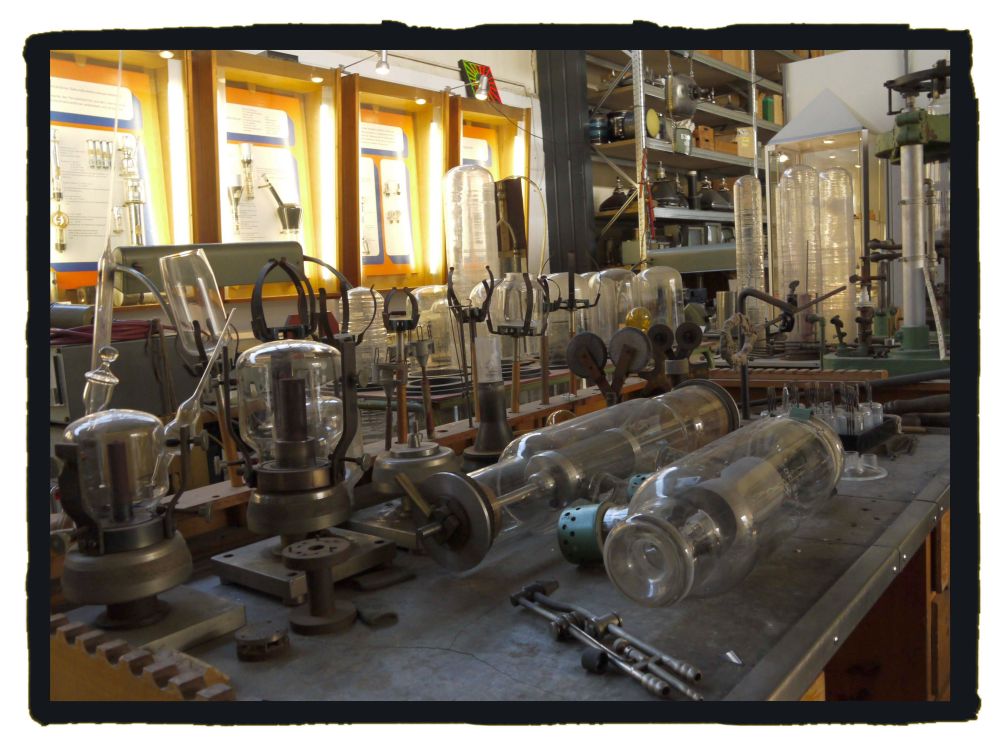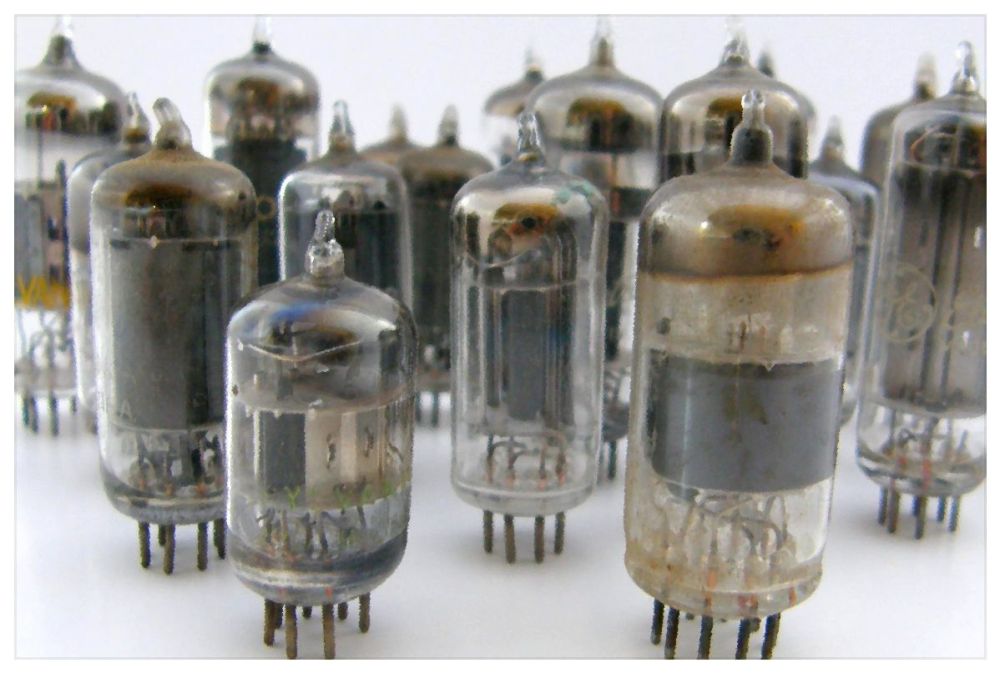(3) Heritage of Loss – The Power of Tubes
Vacuum tubes – still going strong at Industriesalon Schöneweide
Visiting the vast display storeroom at Industriesalon Schöneweide is like entering a sculpture park: You are overwhelmed by the magnitude and strangeness of the objects. The display storeroom (‘Schaudepot’) with a mass of impressive exhibits tells the eventful and multilayered story of electrical engineering at Berlin-Treptow, of the first power plant producing alternating current here, of a cable plant and a transformer station – all of this in three various historical periods in German history. After the “Wende”, when Samsung shut down the place in 2009 and the collection of industrial artifacts from the 1980s was doomed for dumping, some courageous people succeeded in saving this incomparable industrial heritage and founded the Industriesalon Schöneweide as an industrial museum. The transfixed visitor from today’s transistor-based digital world may dwell and rummage at large here and, while doing so, discover the once so powerful kingdom of vacuum valves!
The (nearly) lost kingdom of vacuum tubes
Mostly, the vacuum tube has become obsolete in nowadays technology. Even if tubes are still used at microwave radio frequencies and special hi-fi audio systems sometimes, they have been replaced by an ultra-efficient transistor technology, without any evidence of a tube comeback – except for real audioheads who insist that tubes deliver better audio quality than transistors. So, during the last two decades vacuum tubes have become a cherished part of man’s industrial heritage. When looking at the schematic diagram of a vacuum valve, it’ll perhaps remind you of an illustration showing the interior of an Egyptian pyramid, complete with nicely coloured explanatory hieroglyphs, and in that way it reveals something of the complex process of developing and producing electron tubes on this industrial site.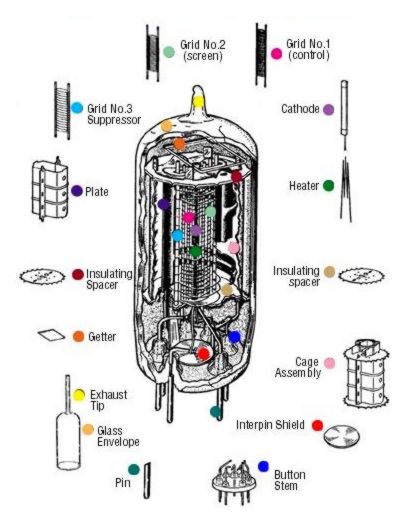
Eavesdropping onto industrial history at Schöneweide
Of course, everyone knows his lessons on batteries, tubes, transistors and the like, hours which proceeded sluggishly from current to voltage, from anode to cathode, from positive to negative and vice versa, out of the black box and back into. You had to accept the given facts and there was no point in mulling things over – that was meant for the chosen few who would get a job in some future electrochemical laboratory. 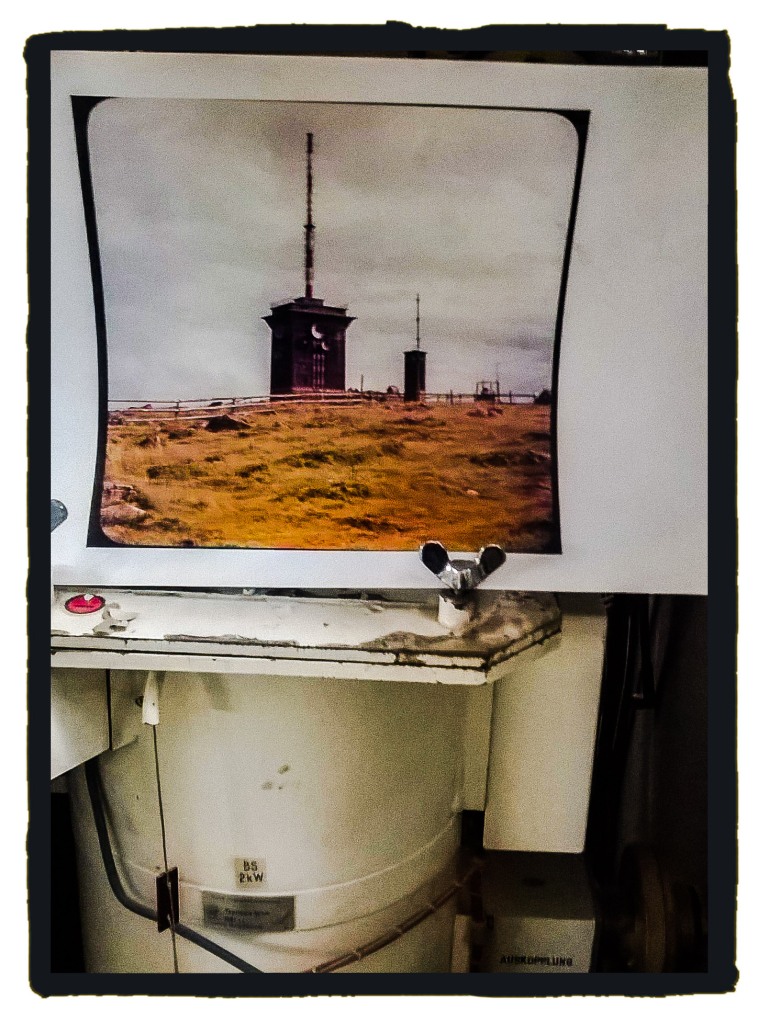
Halting in front of a bulky eavesdropping machine, you learn that it had been developed and used in the days of the German Democratic Republic (GDR) for spying on the enemy territory of the Federal Republic of Germany – from the top of GDR mountain Brocken (1.141 m). You look at the weathered photocopy showing the espionage station on the highest peak of the Harz mountain ranges and, yes, some sparks of long forgotten lessons come to mind: A vacuum tube is a device used to amplify and rectify electronic signals. Sure, in those days they needed tubes to spy from mountain heights. Current passing through the filament, or cathode (-), heats it up so that it knocks off electrons which have a negative charge.Why, oh, why? These electrons are attracted to the plate, or anode(+). A grid of wires between the filament and the plate is negative, repels the electrons and thus controls the current to the plate. In this process it will be able to amplify the voltage given to it. Control and miraculous precision!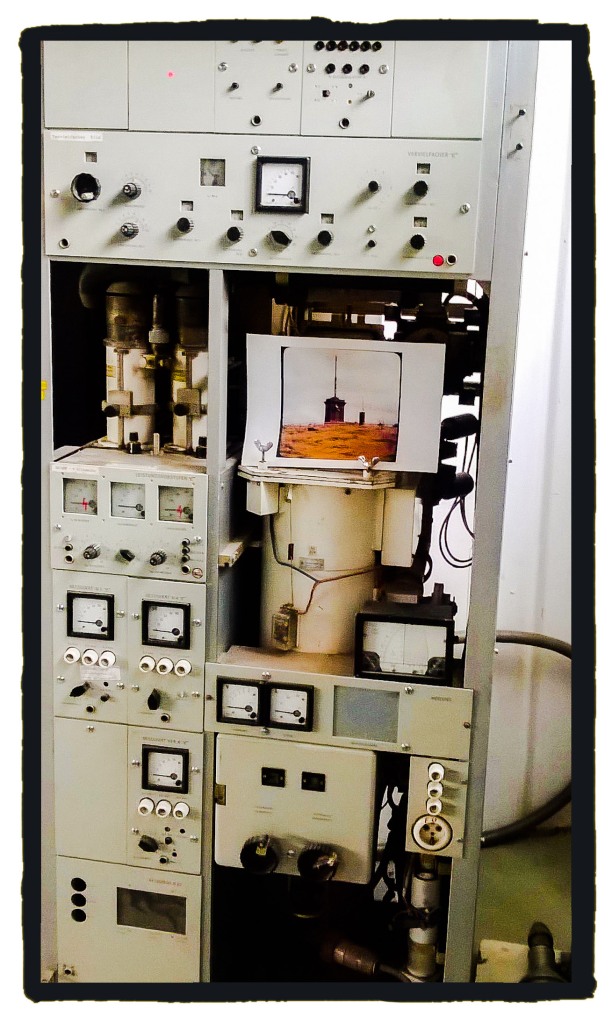
I take two steps back in the narrow corridor, which has led me to this amazing object, to take in the grandeur of the bulky spying machine. It speaks of a bold engineering spirit – ill-fitting to snoop on other people’s affairs but rather suitable to reach out across borders and exchange ideas on new technologies (like transistors, for example). A kind of “light bulb” moment makes me shake off the repelling spy v. spy stories, may they rest in silence. Instead, I can detect some of the former engineer’s mind in the exhibition and curiously turn to the rows of varied vacuum tubes: Here, the industrial, social and political heritage of a past era has become tangible and alive in a very human way!
